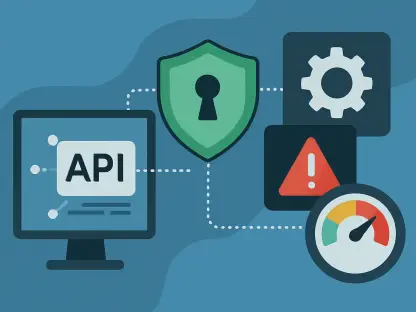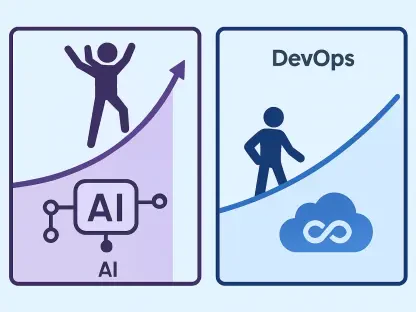In an era where software development is accelerating with innovations like Vibe Coding and Agentic AI, the cryptographic landscape that secures these technologies is undergoing a seismic shift, making adaptability more important than ever. Quantum computing is no longer a distant threat but a looming reality, with experts predicting that current encryption methods could be broken within the next few years. At the same time, regulatory bodies and industry standards are evolving to demand greater flexibility in security practices. For developers, this creates a pressing challenge: how to build applications that remain secure and compliant amidst rapidly changing cryptographic requirements. Crypto agility, the ability of systems to adapt to new algorithms and protocols with minimal disruption, has emerged as a critical solution. This concept is not just a technical nicety but a fundamental necessity for creating resilient, future-ready software. Understanding and implementing this approach is becoming a core skill for developers aiming to safeguard data and maintain trust in an increasingly complex digital environment.
1. Understanding the Core of Crypto Agility
Crypto agility represents a software system’s capacity to swiftly transition between cryptographic algorithms, libraries, or protocols without causing significant operational hiccups. This capability is vital for replacing outdated or compromised methods like RSA and SHA-1, integrating post-quantum cryptography (PQC) to counter quantum threats, and supporting hybrid or fallback modes. It also facilitates seamless algorithm negotiation between clients and servers. The essence of this adaptability lies in enabling developers and system operators to adopt updated security measures without the need for extensive code rewrites or risking compatibility issues. As cryptographic standards evolve, systems designed with this flexibility can avoid the pitfalls of obsolescence, ensuring that applications remain secure against emerging vulnerabilities. For developers, this means building with an eye toward change, recognizing that the algorithms of today may not suffice tomorrow, and preparing for inevitable shifts in the security landscape.
This adaptability is more than a technical requirement; it is a strategic imperative in modern software engineering. Without crypto agility, organizations face the daunting prospect of overhauling entire systems when encryption standards are deprecated or broken. Such overhauls often lead to downtime, increased costs, and potential security gaps during transitions. By embedding the ability to pivot quickly to new cryptographic methods, developers can mitigate these risks significantly. This approach also aligns with the broader trend of building modular, scalable systems that can evolve with technological advancements. For instance, the capacity to integrate PQC ensures that applications handling sensitive data—such as financial transactions or personal health records—are not left vulnerable to future quantum attacks. Embracing this mindset positions developers to respond proactively to threats, maintaining the integrity and confidentiality of data in a dynamic threat environment.
2. The Rising Threat of Quantum Computing
The specter of quantum computing looms large over current encryption methods, with projections indicating that a quantum computer capable of breaking existing standards could emerge by 2030. This urgency is underscored by initiatives from bodies like NIST, which has introduced post-quantum standards such as CRYSTALS-Kyber, CRYSTALS-Dilithium, and HQC for key encapsulation. The threat known as “Harvest Now, Decrypt Later” adds to the immediacy, where malicious actors collect encrypted data today with the intent to decrypt it once quantum technology matures. For developers, this means that applications handling sensitive information—think legal documents or proprietary code—are already at risk. Building systems without the flexibility to adopt quantum-resistant algorithms could necessitate costly, disruptive overhauls later. Crypto agility offers a pathway to preempt these challenges by enabling seamless transitions to PQC, ensuring data protection against future threats.
Beyond the technical implications, the quantum threat reshapes how developers must approach long-term data security. Applications built without foresight for quantum advancements risk becoming liabilities as adversaries stockpile encrypted communications for future exploitation. The guidance from agencies like the NSA and FBI to begin migration plans highlights the critical nature of this shift. Developers must prioritize architectures that can integrate post-quantum solutions without breaking existing functionality. This proactive stance not only safeguards sensitive data but also aligns with emerging industry expectations for robust security frameworks. By embedding crypto agility into development practices now, the groundwork is laid for smoother transitions, reducing the risk of operational disruptions when quantum-safe standards become mandatory. This preparation is essential for maintaining user trust and protecting organizational assets in a rapidly evolving digital landscape.
3. Navigating Compliance and Security Mandates
Compliance with evolving security standards is becoming a non-negotiable aspect of software development, with crypto agility at its core. Agencies like the Cybersecurity and Infrastructure Security Agency (CISA) and the European Union Agency for Cybersecurity (ENISA) are issuing directives to prepare for post-quantum cryptography by cataloging cryptographic assets and emphasizing agility in public key infrastructure (PKI). Updates to standards like ISO/IEC 19790 and 27001 further mandate stronger cryptographic governance, requiring organizations to demonstrate control and flexibility over algorithm lifecycles. For developers, this means that software subject to audits must incorporate mechanisms to adapt to these requirements. Failing to meet such mandates can result in penalties, loss of certification, or reputational damage. Crypto agility ensures that systems remain compliant with minimal friction, avoiding the need for extensive redesigns during regulatory shifts.
Moreover, the push for compliance extends beyond governmental mandates to industry expectations, affecting how software is perceived in the marketplace. Clients and partners increasingly demand proof of robust security practices, including the ability to pivot to new cryptographic standards as needed. Developers who embed agility into their systems can provide assurance that applications will not become obsolete with the next regulatory update. This capability is particularly crucial for sectors like finance and healthcare, where data security is paramount and regulatory scrutiny is intense. By designing with adaptability in mind, developers can help organizations meet current and future compliance demands without sacrificing operational efficiency. This forward-thinking approach not only addresses immediate legal requirements but also positions software as a trusted solution in a landscape where security standards are continuously tightening.
4. Adapting to Deprecated Encryption Standards
The rapid depreciation of once-reliable encryption standards underscores the necessity of crypto agility in software development. Algorithms like SHA-1 have been compromised through collision attacks, while RSA-1024 no longer offers adequate key strength, and protocols such as TLS 1.0 and 1.1 have been retired due to security flaws. Transitioning away from these outdated methods without a flexible system in place can be a logistical nightmare, often requiring manual code updates, new client certificates, and infrastructure changes that lead to application downtime. For developers, the absence of agility means grappling with complex migrations that drain resources and introduce vulnerabilities during transition periods. Systems designed to adapt quickly to new standards can bypass these challenges, ensuring continuity and security even as the cryptographic landscape shifts underfoot.
This adaptability also serves as a buffer against the inevitable future deprecations that will occur as technology advances. Developers face the constant reality that today’s secure algorithms may be tomorrow’s weaknesses, necessitating swift responses to maintain system integrity. Crypto agility allows for preemptive planning, where systems are built to accommodate updates without disrupting user experience or operational workflows. This is particularly critical for applications that operate across diverse environments, where compatibility with various standards is essential. By prioritizing flexible architectures, developers can reduce the risk of being caught off-guard by sudden security advisories or industry-wide shifts. The ability to swap out compromised methods efficiently ensures that applications remain secure and functional, preserving trust and minimizing the costly fallout from delayed or poorly managed transitions.
5. Practical Steps for Implementing Crypto Agility
Developers play a pivotal role in embedding crypto agility into software systems, starting with abstracting cryptographic logic from core application code. Hardcoding specific algorithms should be avoided; instead, abstraction layers or interfaces like Java’s JCE, Python’s cryptography library, or OpenSSL APIs should be utilized. This approach allows for easy substitution of algorithms—such as replacing AES with a post-quantum option like Kyber—without extensive refactoring. Additionally, cryptographic settings, including algorithms, key lengths, and modes, should be defined in configuration files or environment variables rather than embedded in code. This enables dynamic updates during incidents or deprecations without requiring developer intervention. Designing with such modularity ensures that systems can adapt to new security needs swiftly, maintaining operational stability in the face of evolving threats and standards.
Further, building pluggable crypto architectures enhances long-term flexibility by supporting interchangeable backends like TLS libraries (e.g., OpenSSL, BoringSSL) or modular identity providers that accommodate hybrid PQC. Leveraging API-based cryptographic services from platforms like AWS KMS or Azure Key Vault can also streamline updates without downtime. Another key practice is adopting hybrid cryptography, combining classical and post-quantum algorithms in handshakes to balance compatibility with quantum resistance, using libraries such as BoringSSL or Open Quantum Safe. These strategies collectively empower developers to create systems that evolve with cryptographic advancements. By focusing on modularity and configurability, the groundwork is laid for seamless transitions to future standards, reducing the risk of obsolescence and ensuring that security remains robust across diverse operational contexts.
6. Avoiding Common Pitfalls in Crypto Agility
While crypto agility offers significant benefits, missteps in implementation can lead to fragility rather than flexibility. One major pitfall is over-customization, where developers create bespoke cryptographic solutions instead of relying on vetted, widely-used libraries. Such custom approaches often introduce vulnerabilities and complicate maintenance. Another issue is inconsistent algorithm application across system components, where front-end, backend, and APIs fail to negotiate or validate algorithms uniformly, creating security gaps. Developers must ensure coherence across all layers to prevent exploits stemming from mismatched configurations. Addressing these challenges requires a disciplined approach to using established tools and maintaining consistency, ensuring that agility enhances rather than undermines security.
Additionally, neglecting key management and certificate chains is a critical oversight that can derail crypto agility efforts. Agility extends beyond algorithms to how keys are stored, rotated, and revoked, as poorly managed keys can compromise even the most adaptable systems. Developers must integrate robust key lifecycle practices into their designs, ensuring that agility encompasses all aspects of cryptographic security. Ignoring these elements can result in vulnerabilities that adversaries exploit, regardless of algorithm flexibility. By prioritizing standardized libraries, uniform implementation, and comprehensive key management, developers can avoid transforming a strength into a liability. This careful balance ensures that systems remain secure and adaptable, capable of meeting both current threats and future cryptographic demands without introducing unintended risks.
7. A Developer’s Action Plan for Post-Quantum Readiness
To prepare for the cryptographic shifts ahead, developers must follow a structured approach to achieve crypto agility. Begin by cataloging all instances of cryptographic functions, libraries, and protocols within the codebase to understand the scope of current usage. Next, refactor code to abstract and externalize crypto controls using interfaces and configuration files, enabling easy updates without deep code changes. Assessing library compatibility is also crucial—verify that existing crypto libraries support post-quantum and hybrid approaches or have clear roadmaps for such integration. These initial steps lay a solid foundation for adaptability, ensuring that systems are not locked into outdated methods and can pivot as new standards emerge, particularly in response to quantum advancements.
Beyond these foundational actions, implementing monitoring and auditing mechanisms is essential to track algorithm usage and detect deprecated cipher suites or failed negotiations through detailed logs. Collaboration with security teams should also be prioritized, integrating crypto agility into the secure software development lifecycle (SDLC) as a core principle rather than an afterthought. This partnership ensures alignment with organizational security policies and enhances system resilience. By following this action plan, developers can proactively address the transition to post-quantum security, safeguarding applications against emerging threats. These measures collectively reduce the risk of costly overhauls and maintain compliance with evolving standards, positioning software to withstand the cryptographic challenges of the near future.
8. Securing Tomorrow with Crypto Agility
Reflecting on the cryptographic transitions that have unfolded, developers find themselves at a pivotal moment where adaptability has become a cornerstone of secure software design. The urgency to shift toward post-quantum security demands systems that can keep pace with evolving threats and standards, a challenge that is being met with innovative approaches to flexibility. The responsibility is clear: focus on crafting applications that can evolve alongside cryptographic advancements, rather than attempting to reinvent the underlying science of encryption.
Looking ahead, the next steps involve a sustained commitment to integrating crypto agility into every layer of development. Developers are encouraged to prioritize modular architectures and collaborate closely with security teams to embed adaptability into the software lifecycle. By taking proactive measures now, the groundwork is laid to protect applications against vulnerabilities that could emerge. This forward-thinking mindset ensures that software remains robust, compliant, and trusted, ready to face whatever cryptographic challenges the future holds.









